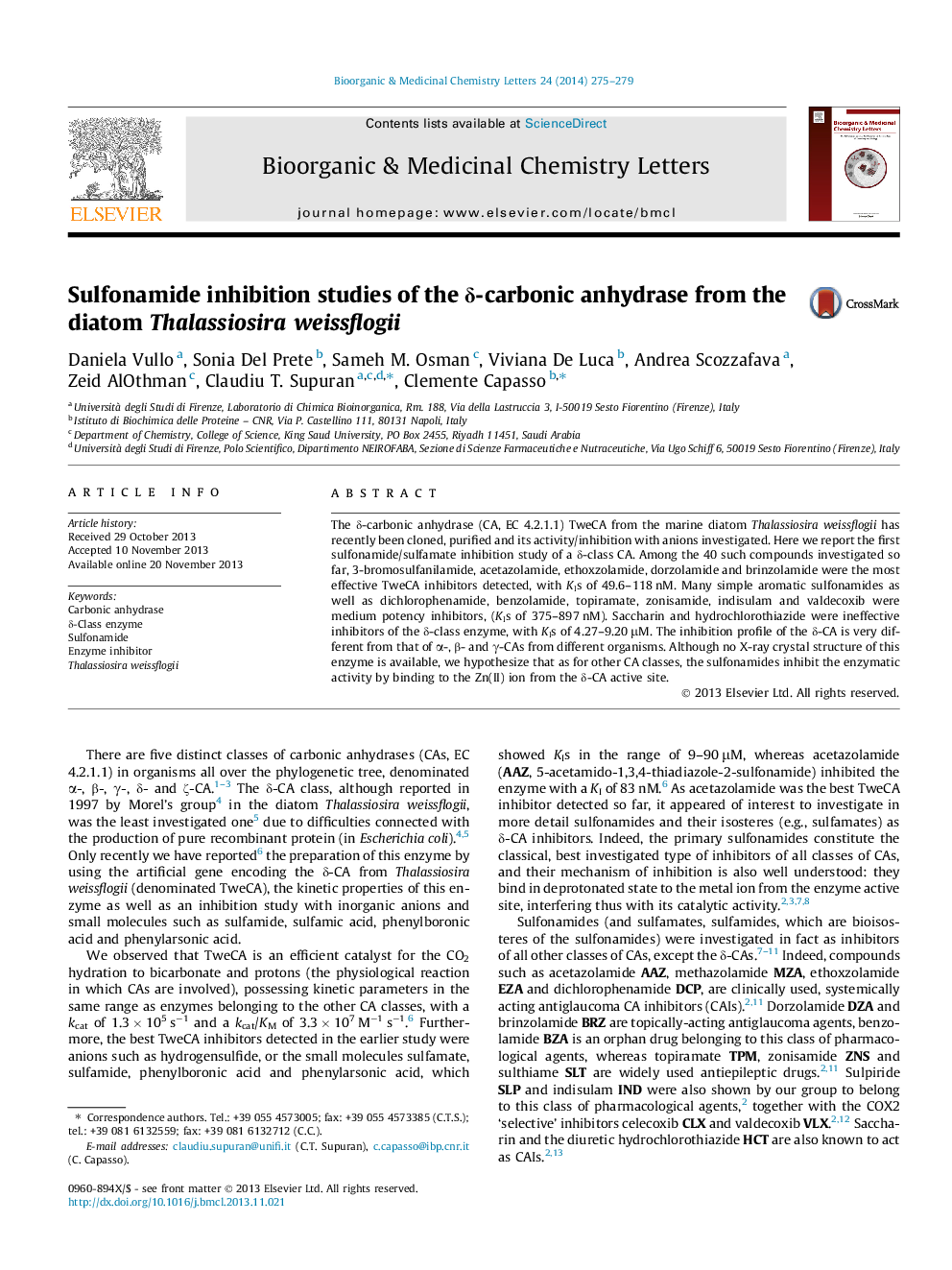| Article ID | Journal | Published Year | Pages | File Type |
|---|---|---|---|---|
| 10592829 | Bioorganic & Medicinal Chemistry Letters | 2014 | 5 Pages |
Abstract
The δ-carbonic anhydrase (CA, EC 4.2.1.1) TweCA from the marine diatom Thalassiosira weissflogii has recently been cloned, purified and its activity/inhibition with anions investigated. Here we report the first sulfonamide/sulfamate inhibition study of a δ-class CA. Among the 40 such compounds investigated so far, 3-bromosulfanilamide, acetazolamide, ethoxzolamide, dorzolamide and brinzolamide were the most effective TweCA inhibitors detected, with KIs of 49.6-118 nM. Many simple aromatic sulfonamides as well as dichlorophenamide, benzolamide, topiramate, zonisamide, indisulam and valdecoxib were medium potency inhibitors, (KIs of 375-897 nM). Saccharin and hydrochlorothiazide were ineffective inhibitors of the δ-class enzyme, with KIs of 4.27-9.20 μM. The inhibition profile of the δ-CA is very different from that of α-, β- and γ-CAs from different organisms. Although no X-ray crystal structure of this enzyme is available, we hypothesize that as for other CA classes, the sulfonamides inhibit the enzymatic activity by binding to the Zn(II) ion from the δ-CA active site.
Related Topics
Physical Sciences and Engineering
Chemistry
Organic Chemistry
Authors
Daniela Vullo, Sonia Del Prete, Sameh M. Osman, Viviana De Luca, Andrea Scozzafava, Zeid AlOthman, Claudiu T. Supuran, Clemente Capasso,
